How to Get Medical Exemption for Window Tint in South Dakota in 2024
Did you know that South Dakota’s laws don’t specify any medical exemptions for window tinting? If you’re suffering from a condition that necessitates darker windows, you might find it a bit of a challenge to get that necessary exemption. Understanding the state’s specific regulations, such as the allowed Visible Light Transmission percentages and restrictions on reflective tint, is the first step. But there’s more to this process. How can you navigate this potential legal labyrinth and secure a medical exemption for window tint in South Dakota? Let’s explore.
The information on myeyerx.net isn’t legal advice; consider it a starting point. Always verify with local and state authorities, as the final decision rests with you. We are not lawyers. For specific legal guidance, we can refer you to legal experts. Remember, knowledge of both state and local laws is essential, and even law enforcement might not be fully updated. We aim for accuracy but advise double-checking for the latest regulations.
Key Takeaways
Key Takeaways
Key Takeaways
- South Dakota’s tint laws do not offer medical exemptions, requiring all tints to be non-reflective and certified to block UV rays.
- Acquiring a signed statement from a licensed physician detailing health necessity for reduced light transmission is essential.
- Presenting the medical statement to relevant authorities for verification is a part of the application process for exemption.
- Maintaining a valid exemption status necessitates annual renewal with a certification from a licensed physician, adhering to specific VLT percentages.
Need Help? Our Doctors Are Here For You!
MyEyeRx was established with the objective of simplifying the complex landscape of state regulations pertaining to legal medical exemptions for window tinting. For individuals seeking to navigate these regulations without resorting to a do-it-yourself approach, we offer a streamlined solution. Our team includes qualified medical professionals who are available to conduct consultations via Zoom. These sessions are designed to assess your eligibility for a medical exemption, ensuring a personalized and efficient process for acquiring the necessary documentation.
Understanding South Dakota Tint Laws
Let’s dive into understanding South Dakota’s tint laws, which do not permit medical exemptions for window tinting. This means that no matter your medical condition, in South Dakota, you can’t use it as a reason to have darker windows than the law allows.
South Dakota’s tint laws have specific requirements. For instance, your tint must be non-reflective. That means you can’t use a tint that reflects sunlight or headlights, making it hard for other drivers to see. The purpose of this rule is to ensure safety on the road.
Additionally, South Dakota requires side mirrors on your vehicle, regardless of how dark your windows are tinted. This rule enhances visibility and safety on the road.
Interestingly, there are no color restrictions for window tint in South Dakota. You can choose any color you desire, as long as it complies with the overall light transmittance and reflectivity rules.
Another important consideration is that all tint film manufacturers selling their product in South Dakota must certify the film. This certification ensures that the film blocks a certain percentage of UV rays, protecting you and your vehicle’s interior from harmful sunlight.
Gathering Medical Documentation
Even though South Dakota doesn’t allow medical exemptions for window tinting, if you were in a state that did, you’d need to gather the appropriate medical documentation. Remember, the request for a medical exemption for window tint primarily relies on the details your medical documentation holds. Here’s a guide to assist you:
- Obtain a signed statement from a licensed physician: Your physician’s statement is paramount. It’s not just about having one, but ensuring it mentions your specific medical condition that necessitates window tinting.
- Detail the health necessity: The physician’s statement should explicitly detail the health necessity of reduced light transmission for your situation.
- Required VLT percentage: The medical documentation should clearly specify the required VLT (Visual Light Transmission) percentage for the window tint.
After securing this vital documentation, keep it readily available. Though South Dakota doesn’t allow for a medical exemption, in states that do, you may be asked to present the signed statement from your licensed physician at any time. By following these steps, you can ensure your medical exemption for window tint is properly documented and supported.
Process of Application for Exemption
Navigating the process of applying for a medical exemption for window tint in South Dakota, you’ll first need to consult state regulations for specific requirements. It’s crucial to understand that obtaining an exemption isn’t automatic, and the application process typically requires a signed statement from a licensed physician.
To get your medical exemption, a licensed physician must verify your condition and the need for window tinting due to health issues. This statement serves as proof during the application process. However, keep in mind that South Dakota may not have explicit guidelines for this, so you’ll need to verify information with local authorities.
Your next step is to present this medical statement to the South Dakota Department of Public Safety or other relevant authorities in your locality. They’re responsible for verifying the authenticity of the document and the legitimacy of your request. While this may seem daunting, remember that they’re there to help you.
Maintaining Valid Exemption Status
Once you’ve received your medical exemption for window tint in South Dakota, it’s crucial to understand how to maintain its validity. It’s not just about getting the exemption; you also need to ensure you’re in constant compliance to avoid penalties and fines.
To maintain your status, you need to keep in mind three critical factors:
- Annual Renewal: Renew your exemption each year. The need for an annual renewal ensures that your condition still warrants the exemption.
- Certification: Renewal isn’t just about time; you also need certification from an Alaska licensed physician. This certification validates your continued medical need for the exemption.
- VLT Percentages: Adhere to specific VLT percentages for different windows. Even with an exemption, there are restrictions. For instance, non-reflective tint above the AS-1 line on windshields is allowed.

Don't want the hassle? Let us take care of your exemption for you!
MyEyeRx.net is here to help you streamlines the process of obtaining a medical exemption for window tint online. Explore our services to easily transform your window tint from non-compliant to legally approved!
Because of the differences in each of the 50 states, we’ve crafted distinct guides for securing window tint medical exemptions for each of the individual states.

Toriano (Tory) Dewberry
Become one of the many satisfied clients Toriano has assisted in obtaining a medical exemption without stepping out of their homes. Click the button below to begin and discover if you're eligible for a medical exemption.

Toriano (Tory) Dewberry
Become one of the many satisfied clients Toriano has assisted in obtaining a medical exemption without stepping out of their homes. Click the button below to begin and discover if you're eligible for a medical exemption.
Frequently Asked Questions (FAQ'S)
What Medical Conditions Qualify for Window Tint in Sc?
In South Carolina, you can get a medical exemption for window tint if you’ve certain conditions. Skin sensitivity precautions come into play for disorders like lupus. Vision impairment concerns can arise from conditions such as ocular albinism. You’ll need medical documentation proving your condition. Tinted windows benefits include reduced glare and UV exposure. Remember to understand South Carolina regulations and maintain your exemption status to meet legal considerations.
How Do I Get Medical Exemption for Window Tint in Ct?
In Connecticut, you can get a medical exemption for window tint. Start by understanding CT regulations. Then, gather your medical documentation, including a physician recommendation for tint due to eye conditions or skin disorders. Apply through the proper channels, detailing the tint benefits for your health. Be prepared for potential legal implications and the possibility of application rejection. If approved, you’ll successfully navigate the exemption process.
What Medical Conditions Qualify for Window Tint in Tn?
In Tennessee, if you’ve a disease sensitive to UV rays, like lupus, you may qualify for window tint exemptions. You’ll need medical proof, such as a doctor’s recommendation detailing your condition and prescription details. To initiate the application process, consult with your physician about your tinting necessity for health protection. Remember, TN tinting laws require careful adherence for these exemptions. Understanding window tint benefits can help protect your health from UV rays impact.
How Do I Get a Medical Exemption for Tinted Windows in Mn?
To get a medical exemption for tinted windows in MN, you’ll need a doctor’s note stating your health issue that justifies the need for tinting. Conditions like light sensitivity or certain eye conditions may qualify. Submit this documentation along with your exemption application, adhering to MN tint laws. Remember, there could be legal implications if not correctly followed. Tinting benefits include reduced glare and UV exposure, but ensure you understand the process thoroughly.

MyeyeRx.net
Ensuring your tint is not just about style, but legality and safety.
Let us guide you through the maze of state regulations to legal clarity.

Conclusion
Navigating South Dakota’s tint laws may feel like a labyrinth, but with proper knowledge and medical documentation, you’ll find your way. Remember, South Dakota’s tint laws are like a tightly-knit sweater; no loose threads for medical exemptions. Keep your documents updated to maintain your exemption status. It’s a challenging journey, but the prize – your health and comfort – is well worth it. Always consult local authorities for the most accurate information, and keep shining through your tinted windows!
Looking to find a Reputable Window Tint Company In South Dakota?
Checkout Tintingnearme.com to Find A Local Tint Shop
After learning about window tint laws, the next step is to find a trusted local window tinting shop. Tinting Near Me offers a selection of reputable shops knowledgeable in both quality tinting and legal standards, including medical exemptions.
Choose a shop from their list for expert service that meets legal requirements and enhances your vehicle’s compliance and protection.


